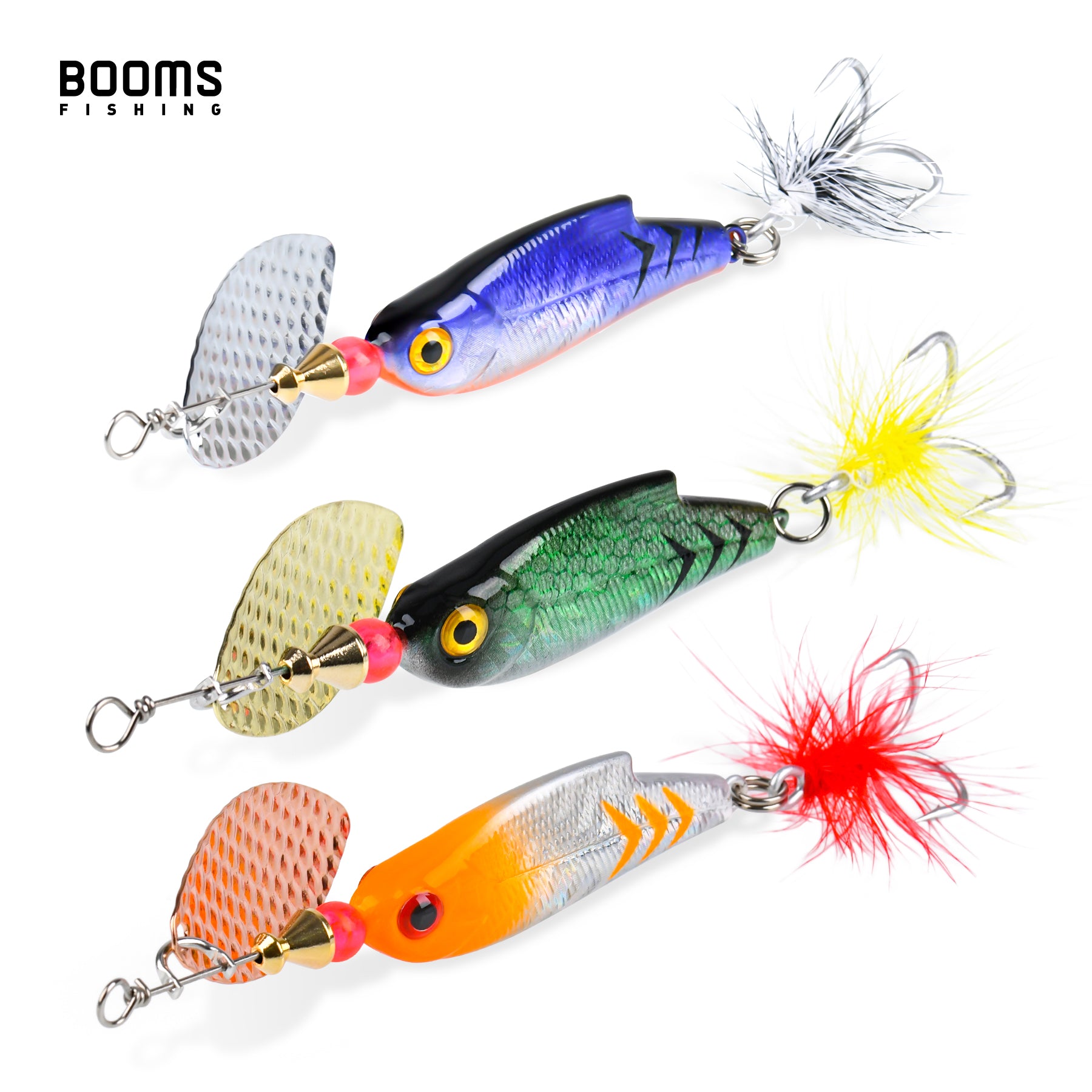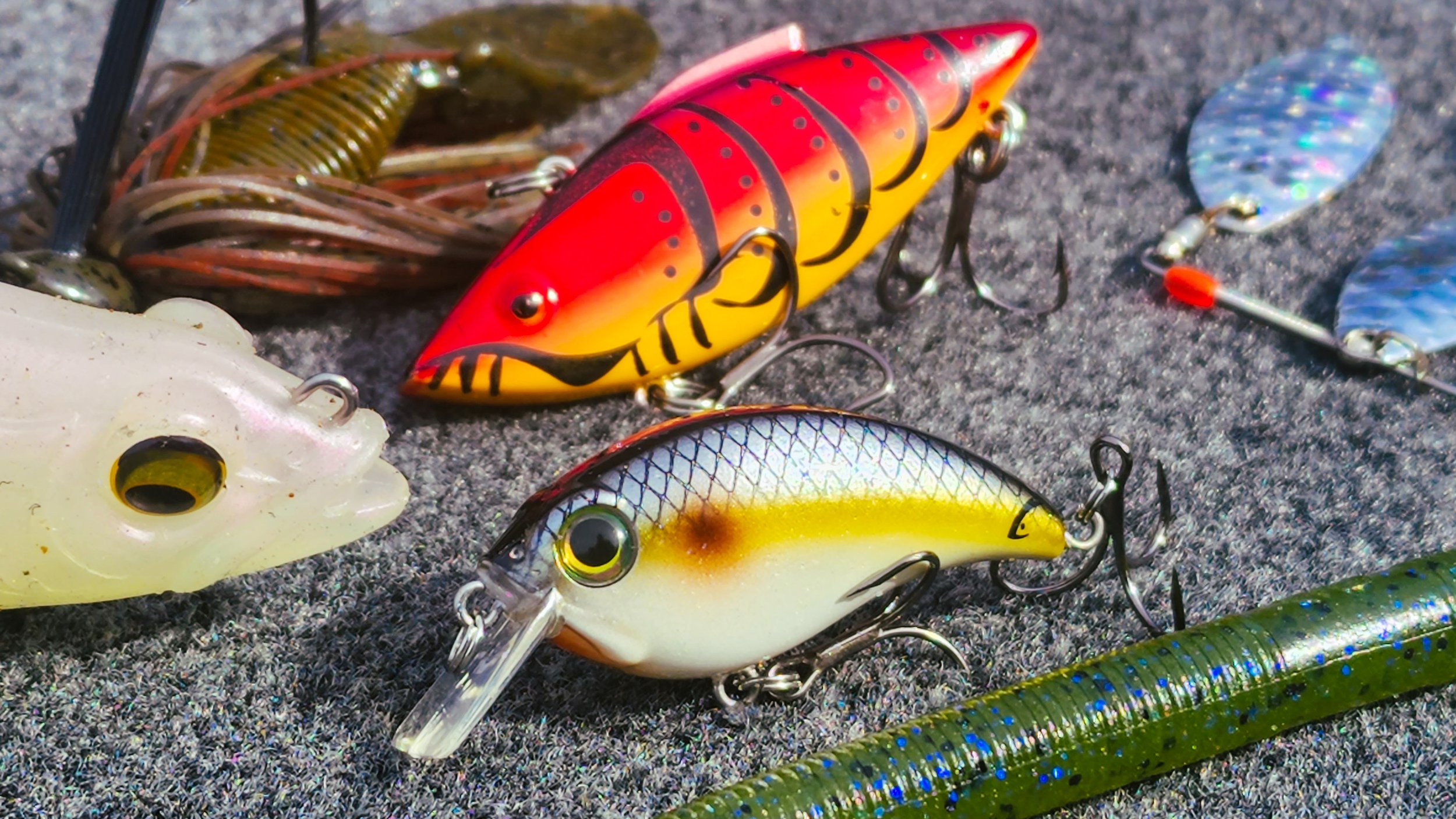Premium Bass Fishing Lures for Clear vs. Murky Water — What Works Best?
Discover the most effective Methods for Choosing Bass Lures for Your Following Fishing Expedition
Selecting the ideal bass Lures can dramatically impact fishing success. Fishermens should consider numerous factors, such as seasonal patterns and water quality. Comprehending bass actions is important (Best Bass Lures). Picking Lures that simulate all-natural target can lead to far better outcomes. Several are unsure about the ideal techniques to implement. What techniques should one prioritize to enhance their angling experience? The responses exist in examining details conditions and adjusting appropriately
Understanding Bass Habits and Environment
Understanding the nuances of bass habits and habitat is crucial for any type of angler aiming to boost their angling success. Bass are frequently located in various settings, including lakes, tanks, and rivers, where they seek framework such as immersed rocks, plants, and fallen trees. Their behavior is greatly affected by water temperature, light levels, and available forage.
Throughout warmer months, bass have a tendency to be extra energetic, typically inhabiting shallower waters, while in cooler months, they pull back to deeper locations. In addition, bass show patterns of feeding, commonly being much more aggressive during dawn and sundown. They are opportunistic predators, taking advantage of smaller sized fish, pests, and shellfishes. Comprehending these variables can help fishermens recognize prime angling places, in addition to the most effective times to fish. Acknowledging bass behavior in relation to their habitat is vital for effective fishing, assisting fishermens in making informed choices concerning where to cast their lines.
Matching Lures to Seasonal Conditions
As fishermens adapt their strategies to transforming periods, matching Lures to seasonal conditions comes to be an important technique for enhancing fishing success. In spring, when bass are emerging from winter months inactivity, fishermens frequently utilize spinnerbaits and shallow-running crankbaits to imitate the motions of victim. Summer season requires a shift to topwater Lures or soft plastic worms, as bass seek shade and cooler waters. Throughout the autumn, when bass are fattening up before winter, larger Lures that imitate baitfish can be efficient. Wintertime asks for a more subtle method; jigs and slow-moving finesse lures usually yield better outcomes as bass come to be inactive. Recognizing these seasonal patterns helps fishermens select the best lures, thereby increasing their opportunities of a successful catch. By lining up attraction options with the all-natural actions of bass throughout the year, anglers can maximize their fishing experience and enhance their general success on the water.
The Relevance of Shade Option
Shade selection plays an important duty in bass angling, as it can dramatically impact a fisher's success. Variables such as water quality, seasonal changes, and the certain preferences of different bass varieties all influence which colors are most efficient. Comprehending these elements enables anglers to make informed options that improve their fishing experience.
Water Quality Considerations
When the water clarity differs, picking the appropriate bass appeal shade ends up being important for attracting fish. In clear water, natural shades such as shad or bluegill patterns often tend to be a lot more effective, as they imitate the prey bass are accustomed to seeing. Alternatively, in murky or discolored water, brighter shades like chartreuse or fire tiger can enhance exposure, making it easier for bass to detect the attraction. The comparison between the attraction and the surrounding atmosphere plays a significant function in angling success. Fishermens must likewise consider the moment of day; lighter shades may function better in intense sunshine, while darker tones can be much more effective throughout low-light conditions. Adjusting lure shade to water clearness optimizes the possibilities of an effective catch.
Seasonal Color Scheme
Exactly how do seasonal adjustments impact bass actions and appeal efficiency? As temperatures change throughout the year, bass readjust their feeding practices and chosen environments, making color selection crucial for successful angling. In springtime, when bass generate, intense shades like chartreuse can stand out. Summer season commonly call for even more natural tones, such as environment-friendly pumpkin or shad patterns, as bass look for to blend in with their environments. During autumn, dynamic shades like orange and red resemble the transforming foliage, attracting bass as they prepare for winter. In wintertime, suppressed tones such as white or grey may be a lot more reliable, as bass end up being inactive. Inevitably, comprehending seasonal color scheme enables anglers to pick Lures that reverberate with bass's present behavior, boosting their possibilities of success.

Species-Specific Preferences
Comprehending species-specific choices is crucial for fishermens seeking to maximize their appeal choice. Different bass types, such as largemouth and smallmouth, show distinct shade choices based upon their habitat and feeding habits. Largemouth bass commonly like darker shades, especially in murky waters, where shades like black and dark green resemble all-natural prey. In comparison, smallmouth bass are a lot more most likely to respond to brighter colors, such as chartreuse and orange, particularly in clear waters. Additionally, water clarity and light problems can affect these choices, making it necessary for fishermens to adjust their attraction color accordingly. By thinking about these species-specific choices, anglers can boost their possibilities of a successful fishing journey, inevitably boosting their overall experience on the water.
Choosing the Right Tempt Type for Various Scenarios
Picking the ideal appeal kind for different angling circumstances is essential for success on the water. Anglers have to take into consideration aspects such as water quality, climate condition, and the bass's feeding behaviors. For murky water, darker-colored appeals, such as jigs or spinnerbaits, can be reliable, as they create a solid silhouette. In clear water, natural-colored Lures like soft plastics or topwater lures may attract careful bass.
When angling in hefty cover, using hefty jigs or weedless gears can aid navigate through obstacles without snagging. Alternatively, open water situations may gain from crankbaits or swimbaits that can cover better ranges. Additionally, throughout cooler months, slower-moving Lures tend to be more efficient, while warmer conditions might call for faster retrieves. By adapting attraction options to certain settings, anglers enhance their chances of an effective catch.
Explore Dimension and Action

Fishermens typically trying out a series of actions and dimensions to figure out what jobs best under differing problems. A slow, subtle action might be ideal in chillier water, while a fast, aggressive fetch might be more reliable in warmer temperature levels. By thoroughly observing the bass's reactions to these variants, fishermens can improve their technique and increase their opportunities of a successful catch. Eventually, the ideal mix of dimension and activity can make a substantial difference on the water.
Reading Water Conditions for Better Lure Choices
Understanding water problems is essential for selecting the right bass attraction. Variables such as water clearness and temperature can significantly influence fish actions and feeding patterns. By evaluating these conditions, anglers can make educated decisions that improve their chances of a successful catch.
Evaluating Water Quality
Just how does water clarity affect the performance hop over to these guys of bass appeals? Water quality dramatically affects bass behavior and the visibility of attractions. In clear water, bass have a tendency to be extra cautious, making natural-colored Lures a lot more effective as they imitate target very closely. Fishermens may select lighter, subtler tones to avoid terrifying fish. On the other hand, in dirty or discolored water, brighter and more dynamic colors stand out, bring in focus also in low exposure conditions. Additionally, the sort of appeal can vary; slower-moving Lures might work better in clear water, while much faster, extra hostile discussions can tempt bass in murkier environments. Comprehending the clarity of the water enables fishermens to pick Lures that optimize their opportunities of success throughout their fishing trips.
Understanding Water Temperature
As water temperature varies, it straight affects bass habits and their feeding patterns, making it critical for anglers to think about when picking attractions. Normally, bass like warmer temperatures, normally in between 65 ° F and 75 ° F, where their metabolism is enhanced, leading to raised feeding activity. In cooler water, bass end up being sluggish and may choose slower-moving lures, such as jigs or soft plastics. On the other hand, throughout warmer months, faster presentations like crankbaits or topwater Lures can be more efficient. Anglers should also consider seasonal changes; as an example, springtime warming brings about aggressive feeding as bass prepare to spawn. By understanding exactly how temperature level influences bass, fishermens can make educated decisions on appeal selection, dramatically boosting their opportunities of success.
Tips for Organizing and Preserving Your Draw Collection
While helpful site lots of anglers concentrate on picking the appropriate Lures for their next angling trip, organizing and preserving an attraction collection is equally crucial for enhancing performance and performance. A well-structured collection enables fishermens to rapidly locate the Lures they need, minimizing time spent searching with take on boxes.
To start, anglers must classify Lures by kind-- crankbaits, jigs, or soft plastics-- making it easier to find details alternatives. Using take on trays or boxes with adjustable compartments can assist keep every little thing arranged. Identifying containers simplifies the procedure better, aiding fast recognition.
Normal maintenance is additionally critical; fishermens must inspect Lures for indications of wear, such as rusted hooks or damaged paint, and change them as necessary. Cleaning up Lures after each journey avoids deterioration and guarantees longevity. By applying these organizational and upkeep approaches, fishermens can boost their angling experience and ensure their Lures are constantly in ideal condition.
Regularly Asked Inquiries
What Are the most effective Brand Names for Bass Lures?
The most effective brands for bass Lures include Rapala, Strike King, and Berkley. These brand names are renowned for their effectiveness, development, and quality, appealing to both beginner and experienced anglers seeking successful fishing experiences.
The Amount Of Lures Should I Tackle a Journey?
A regular fishing expedition ought to include around 5 to 10 appeals, enabling flexibility while staying clear of clutter. This option must include various kinds and colors to adjust to altering conditions and fish choices.
Can I Make My Own Bass Lures?
Yes, people can make their own bass Lures utilizing numerous materials and strategies - Bass Lures. Crafting Lures enables modification, enabling anglers to trying out sizes, colors, and forms to suit certain angling conditions and preferences
What's the Average Life Expectancy of a Bass Tempt?
The average life expectancy of a bass attraction differs, usually lasting from a couple of months to a number of years, depending upon material top quality, use frequency, and ecological conditions. Appropriate care can substantially expand a lure's usability.
Are There Particular Lures for Night Angling?
Yes, there are specific Lures designed for night angling. Dark colors and Lures that create vibrations, such as spinnerbaits or jigs, frequently attract bass in low-light conditions, enhancing exposure and setting off aggressive reactions.
Alternatively, in dirty or discolored water, brighter colors like chartreuse or fire tiger can boost visibility, making it less complicated for bass to find the lure. Bigger Lures can bring in bigger bass, while smaller sized Lures might be a lot more effective for capturing smaller fish. Additionally, the kind of appeal can vary; slower-moving Lures could function better in clear water, while quicker, a lot more aggressive presentations can attract bass in murkier environments. As water temperature varies, it straight influences bass actions and their feeding patterns, making it essential for anglers to think about when choosing lures. While many fishermens focus on selecting the appropriate Lures for their following fishing journey, keeping an attraction and arranging collection is similarly important for improving efficiency and efficiency.